Imagine all those times you’ve stood at your front door, fumbling for your keys. It’s frustrating and common. For a more efficient way to enter and exit your home, consider investing in a smart lock.
Smart locks enable you to unlock your door from anywhere using an app on your phone or automatically unlock when you’re near your front door. While they may not necessarily enhance your home’s security, they do provide greater control and efficiency. With a smart lock, you’ll never need to drop everything to search for keys. You can lock and unlock your door remotely and extend digital “keys” to frequent visitors like friends, family, or caregivers.
Most smart locks still allow the use of a traditional key, but the convenience of connectivity is significant. Whether your hands are full of groceries or children, a smart lock simplifies access. If you’re in bed wondering if you locked the door, you can just check your phone.
However, not all smart locks are created equal. Options range from keyless and Bluetooth locks to those using fingerprint recognition and those that fit over your existing deadbolt or replace it entirely. Navigating these choices can be challenging if you’re new to smart home technology. Here’s an overview of today’s smart lock options, what you need to know before purchasing one, and how to select the right lock for your needs.
Table of Contents
ToggleWhat is a Smart Lock?
A smart lock is a Wi-Fi or Bluetooth-enabled device that allows you to lock and unlock your door electronically, often using your smartphone, voice command, or a dedicated keypad. These locks provide an extra layer of security and convenience, allowing for remote access, real-time monitoring, and integration with other smart home devices.
Advantages of Smart Locks in Terms of Safety
1. Advanced Security Features
- Encryption: Most smart locks use advanced encryption methods to secure the data transmitted between the lock and your smartphone or smart home hub, making it difficult for hackers to intercept.
- Tamper Alerts: Many smart locks are equipped with tamper detection sensors that send alerts to your phone if someone tries to force the lock or manipulate it.
2. Activity Monitoring
- Access Logs: Smart locks typically maintain a log of who entered and exited your home and when. This feature can be particularly useful for tracking the comings and goings of household members and service providers.
- Notifications: You can receive real-time notifications on your smartphone about lock activity, allowing you to monitor your home’s security even when you are away.
3. Remote Control
The ability to lock and unlock your door remotely can enhance security. For example, you can ensure your door is locked even after you’ve left home or unlock the door for a trusted visitor while you are away.4. Integration with Security Systems
Smart locks can be integrated with other smart home devices like security cameras, alarm systems, and video doorbells. This integration can create a more comprehensive security system, providing multiple layers of protection.Types of Smart Locks
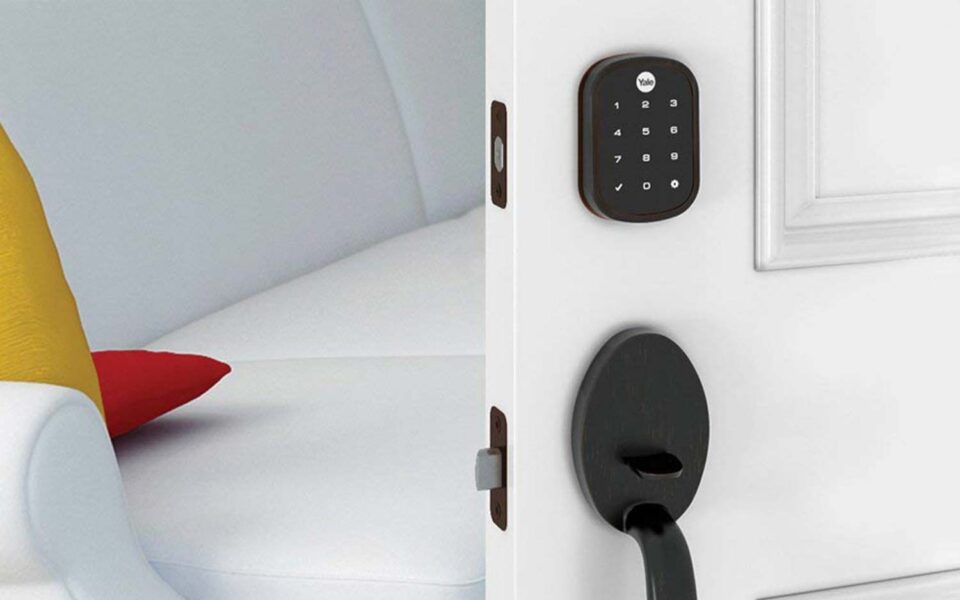
Keypad Smart Locks
These locks come with a keypad that allows you to enter a code to unlock the door. They are easy to use and ideal for families with children who might forget their keys.
Bluetooth Smart Locks
Bluetooth smart locks connect to your smartphone via Bluetooth. When you are within a certain range, the lock will automatically unlock. This type is great for users who prefer a hands-free experience.
Wi-Fi Smart Locks
Wi-Fi smart locks offer the most features, including remote access and real-time notifications. They connect to your home’s Wi-Fi network, allowing you to control the lock from anywhere in the world using a smartphone app.
Biometric Smart Locks
Biometric smart locks use fingerprint recognition to unlock the door. They offer a high level of security and convenience, as you don’t need to remember a code or carry a key.
Hybrid Smart Locks
Hybrid smart locks combine multiple unlocking methods, such as keypads, Bluetooth, Wi-Fi, and biometric recognition. These locks offer versatility and are suitable for various user preferences.
How to Know You Are Choosing a Quality Door Lock?
Choosing a quality door lock is essential for ensuring the safety and security of your home. With so many options available, it can be challenging to determine which locks are reliable and provide the best protection. Here are some key factors to consider when selecting a quality door lock:
1. Lock Grade and Certification
- ANSI/BHMA Standards: In the United States, the American National Standards Institute (ANSI) and the Builders Hardware Manufacturers Association (BHMA) have established grading systems for locks. Locks are graded from Grade 1 to Grade 3, with Grade 1 being the highest and most secure.
- Grade 1: Best for commercial and high-security residential applications.
- Grade 2: Suitable for residential use, offering a good balance of security and cost.
- Grade 3: Basic residential security.
- Australian Standards: In Australia, look for locks that comply with Australian Standard AS4145, which specifies the performance requirements for mechanical locks.
2. Build Quality and Materials
- Material: Quality door locks are typically made from durable materials such as solid brass, stainless steel, or bronze. These materials are resistant to corrosion and provide a higher level of security.
- Construction: Ensure the lock has solid construction with no flimsy or cheap components. A well-built lock will feel sturdy and have minimal play or wobble in the mechanism.
3. Security Features
- Deadbolts: A quality deadbolt is a crucial component of a secure door lock. Look for deadbolts with features such as anti-pick pins, drill-resistant plates, and hardened steel bolts.
- Strike Plate: The strike plate is the metal plate that the bolt slides into. A reinforced strike plate with long screws that penetrate deep into the door frame enhances security by making it more resistant to forced entry.
- Lock Cylinder: High-security lock cylinders offer protection against picking, bumping, and drilling. Consider locks with patented key control systems that prevent unauthorized key duplication.
4. Brand Reputation
- Trusted Brands: Opt for locks from reputable manufacturers known for their quality and reliability. Some well-known brands include Schlage, Kwikset, Yale, and Lockwood.
- Customer Reviews: Read customer reviews and ratings to gauge the performance and durability of the lock. Look for feedback on security features, ease of installation, and long-term reliability.
5. Smart Lock Features
- Connectivity: If you’re considering a smart lock, ensure it has reliable connectivity options like Bluetooth, Wi-Fi, or Z-Wave, depending on your needs.
- Integration: Check if the smart lock integrates seamlessly with your existing smart home system and devices such as security cameras, alarms, and home automation hubs.
- Security: Smart locks should have robust encryption to protect against hacking. Look for additional security features such as two-factor authentication and automatic locking.
6. Ease of Installation
- DIY Installation: Many quality locks are designed for easy DIY installation with detailed instructions and all necessary hardware included. Ensure the lock fits your door’s thickness and existing holes.
- Professional Installation: For more complex locks, especially smart locks, consider professional installation to ensure it is correctly fitted and functions properly.
7. Warranty and Support
- Warranty: A good warranty indicates the manufacturer’s confidence in their product. Look for locks that come with at least a one-year warranty, with longer warranties being preferable.
- Customer Support: Reliable customer support is essential in case you encounter any issues with the lock. Check if the manufacturer offers accessible support channels and resources.
8. User-Friendly Design
- Keyless Entry Options: Many modern locks offer keyless entry options such as keypads, fingerprint recognition, or smartphone apps. These features can add convenience without compromising security.
- User Management: If multiple people need access, look for locks that allow you to create and manage multiple user codes or keys easily.
Things to Consider When Buying a Smart Lock
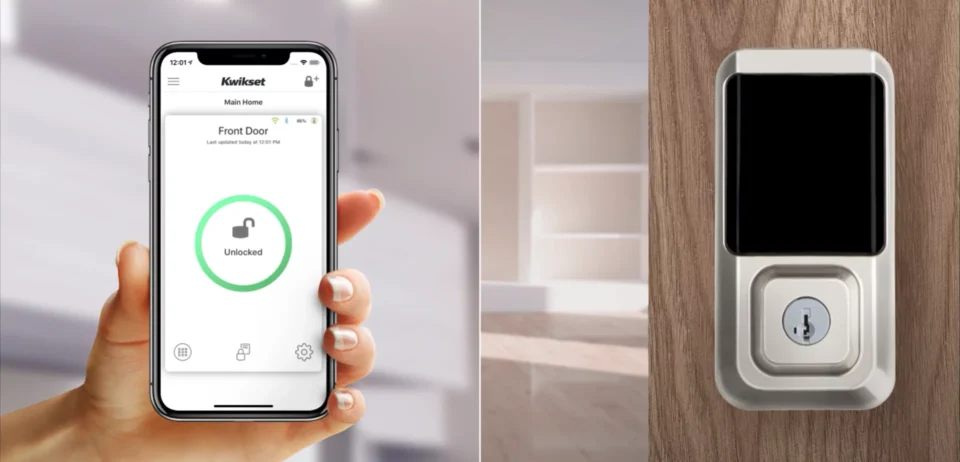
1. Should You Keep or Replace Your Existing Deadbolt?
When considering a smart lock for your front door, one of the first decisions you’ll face is whether to keep your existing deadbolt or replace it entirely. Both options have their pros and cons, and the best choice depends on your specific needs and preferences.
Keeping Your Existing Deadbolt
Some smart locks are designed to work with your existing deadbolt. These are often easier to install and less invasive, as they simply retrofit over your current lock hardware.
Pros:
- Ease of Installation: Retrofitting a smart lock onto your existing deadbolt is usually a straightforward process that doesn’t require advanced DIY skills or specialized tools.
- Cost-Effective: Since you’re only adding to your current setup, retrofitting can be more affordable than purchasing a full lock replacement.
- Maintains Traditional Key Use: You can still use your traditional key as a backup method of entry, which can be reassuring for some users.
Cons:
- Limited Features: Retrofitting may limit some advanced features available in full replacement smart locks.
- Compatibility Issues: Not all deadbolts are compatible with retrofit smart locks, so you’ll need to check compatibility before purchasing.
Replacing Your Deadbolt
Full replacement smart locks include both the smart locking mechanism and the deadbolt. These systems often offer more advanced features and a more integrated appearance.
Pros:
- Advanced Features: Full replacements typically offer a wider range of features, including biometric access, enhanced security measures, and better integration with other smart home devices.
- Aesthetics: A complete replacement can provide a more modern and cohesive look to your front door.
- Enhanced Security: New deadbolt replacements can offer improved security features over older, worn-out locks.
Cons:
- Complex Installation: Installing a new deadbolt can be more complex and may require professional assistance.
- Higher Cost: Full replacement smart locks are generally more expensive than retrofit options.
In summary, if you are looking for a quick and less invasive upgrade, a retrofit smart lock may be the best option. However, if you want the latest features and are willing to invest more time and money, replacing your deadbolt might be the way to go.
2. Picking a Protocol: Bluetooth, Z-Wave, or Wi-Fi
A smart lock needs to communicate with your phone and the rest of your smart home setup. Most smart locks use one of three common communication protocols: Bluetooth, Z-Wave, or Wi-Fi. Each has its pros and cons, so understanding these differences is crucial.
Bluetooth
Bluetooth is a popular protocol for smart locks due to its low power consumption, which means longer battery life for your lock.
Pros:
- Battery Efficiency: Bluetooth smart locks typically have batteries that last longer than those using Wi-Fi.
- Direct Connection: They connect directly to your smartphone without needing a hub, making them simpler to use if you only need a smart lock and not a full smart home system.
Cons:
- Limited Range: Bluetooth’s range is about 300 feet in ideal conditions, but walls and other obstructions can reduce this significantly.
- Limited Remote Access: Without a hub, remote access to your lock can be limited, restricting your ability to control the lock when you’re away from home.
Z-Wave
Z-Wave smart locks require a Z-Wave hub to connect to your home network, translating the Z-Wave signal into something your router can understand.
Pros:
- Integration: Z-Wave locks can integrate with a wide range of other smart home devices, providing a cohesive smart home experience.
- Range Extenders: Z-Wave devices can act as range extenders, allowing for a more extensive network reach.
Cons:
- Hub Requirement: You need a Z-Wave hub, which adds to the initial setup cost and complexity.
- Dependent on Hub: All communication with the lock passes through the hub, so if the hub goes down, so does your control over the lock.
Wi-Fi
Wi-Fi smart locks connect directly to your home’s Wi-Fi network, offering the most robust set of features and remote access capabilities.
Pros:
- Remote Access: You can control your lock from anywhere with an internet connection, making it ideal for granting access to guests or service providers when you’re not home.
- Advanced Features: Wi-Fi locks typically offer a wide range of features, including integration with voice assistants like Google Assistant and Amazon Alexa.
Cons:
- Battery Consumption: Wi-Fi locks tend to consume more power, resulting in more frequent battery changes.
- Complexity: Setting up a Wi-Fi smart lock can be more complex than Bluetooth or Z-Wave, and they often require a stable and strong Wi-Fi signal to function properly.
3. Connecting to Third-Party Products
One of the significant benefits of smart locks is their ability to integrate with other smart home devices. When choosing a smart lock, consider how it will connect with third-party products you already own or plan to purchase.
Smart Home Hubs
If you have a smart home hub like SmartThings, Apple HomeKit, or Amazon Echo, ensure the smart lock you choose is compatible with it. Hubs allow you to control multiple devices from a single app and create automated routines. For example, you could set your lights to turn on automatically when you unlock your front door.
Security Systems
Integrating your smart lock with your home security system can enhance your home’s security. When your smart lock is part of your security setup, you can receive alerts if the lock is tampered with or if someone enters your home.
Voice Assistants
Many smart locks work with voice assistants like Amazon Alexa, Google Assistant, and Apple’s Siri. This integration allows you to lock or unlock your door with voice commands, check the status of your lock, or include the lock in automated routines.
Video Doorbells
Pairing your smart lock with a video doorbell adds an extra layer of security and convenience. You can see and talk to visitors before granting them access, all from your smartphone.
4. How Do You Want to Interact with Your Lock?
Consider how you and your household members will interact with the smart lock. Different smart locks offer various methods of interaction, each with its advantages and potential drawbacks.
Keypad Entry
Some smart locks come with a keypad, allowing you to enter a code to unlock the door. This is convenient for households with children or guests who might not have a smartphone.
Pros:
- No Need for Keys: Eliminates the need to carry physical keys.
- Guest Access: Easily share access codes with visitors.
Cons:
- Wear and Tear: Frequent use can wear down the keypad, and visible wear may hint at the correct code.
- Code Management: Regularly changing codes for security can be cumbersome.
Smartphone App
Many smart locks are controlled via a smartphone app, allowing you to lock or unlock your door remotely.
Pros:
- Remote Access: Control your lock from anywhere.
- Notifications: Receive alerts about lock activity.
- User Management: Easily add or remove users and set temporary access codes.
Cons:
- Dependency on Smartphone: If your phone dies or you forget it, accessing your home can be difficult.
- App Glitches: Software updates or bugs can affect functionality.
Biometric Access
Biometric smart locks use fingerprint recognition for entry, offering a high level of security and convenience.
Pros:
- High Security: Difficult to replicate fingerprints.
- Convenience: Quick and easy access without keys or codes.
Cons:
- Cost: Biometric locks are generally more expensive.
- Sensor Issues: Dirt or moisture can affect the sensor’s ability to read fingerprints.
Traditional Key
Most smart locks still allow the use of a traditional key as a backup.
Pros:
- Backup Access: Provides an alternative method of entry if other methods fail.
- Familiarity: Some users prefer the reassurance of a physical key.
Cons:
- Defeats the Purpose: Relying on keys can negate the convenience of a smart lock.
- Lost Keys: You can still lose your key, which brings back the original problem.
Top Smart Locks on the Market
August Wi-Fi Smart Lock

Features:
- Wi-Fi connectivity
- Easy installation over existing deadbolt
- Remote access and control
- Integration with Amazon Alexa, Google Assistant, and Apple HomeKit
- Auto-lock and unlock feature
Pros:
- No need to replace existing hardware
- Comprehensive smart home integration
- Easy-to-use app
Cons:
- Requires a Wi-Fi bridge for full functionality
- Higher price point
Schlage Encode Smart Wi-Fi Deadbolt
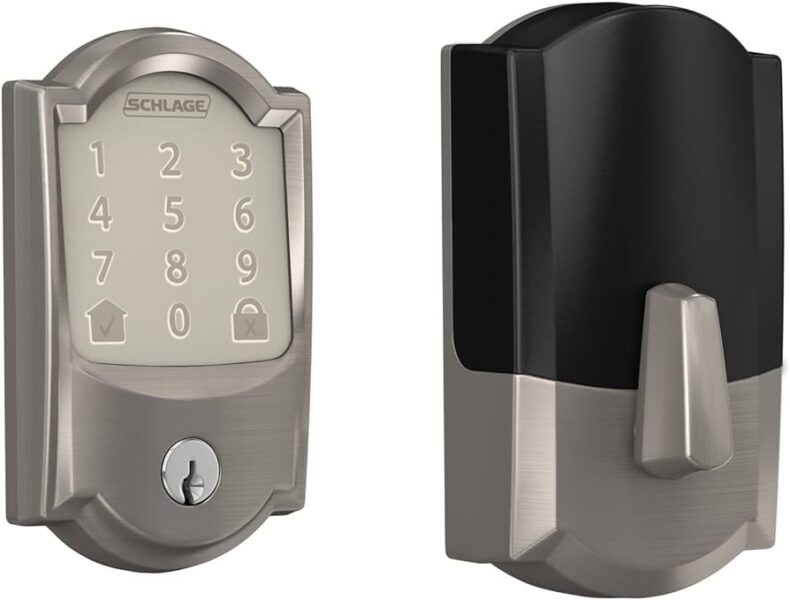
Features:
- Built-in Wi-Fi
- No additional hub required
- Voice control with Alexa
- Built-in alarm technology
- Fingerprint-resistant touchscreen
Pros:
- Robust security features
- Easy installation
- No additional accessories needed for Wi-Fi connectivity
Cons:
- Bulky design
- Higher price point
Yale Assure Lock SL with Z-Wave
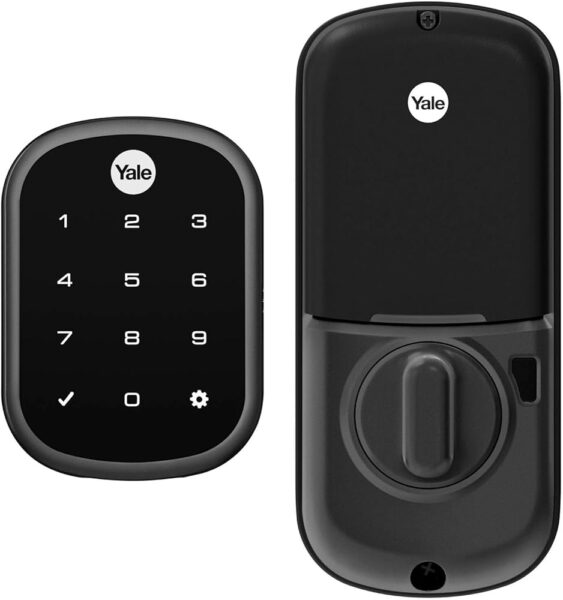
Features:
- Slim design
- Touchscreen keypad
- Z-Wave connectivity
- Integration with Amazon Alexa and SmartThings
- Auto-lock feature
Pros:
- Sleek, modern design
- Comprehensive smart home integration
- Easy to use
Cons:
- Requires Z-Wave hub for full functionality
- Battery life could be better
Kwikset Halo Wi-Fi Smart Lock
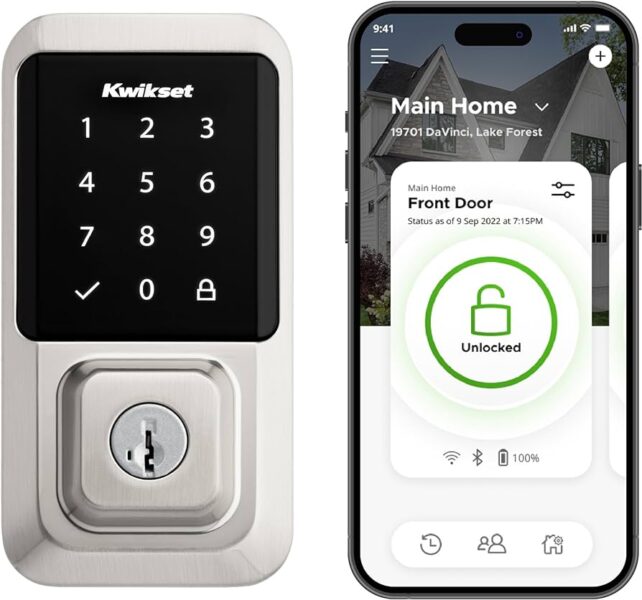
Features:
- Built-in Wi-Fi
- Touchscreen keypad
- Voice control with Alexa and Google Assistant
- SmartKey Security
- Remote access and control
Pros:
- No additional hub required
- Easy-to-use app
- Multiple ways to unlock
Cons:
- Shorter battery life
- Setup can be complex for some users
Ultraloq U-Bolt Pro
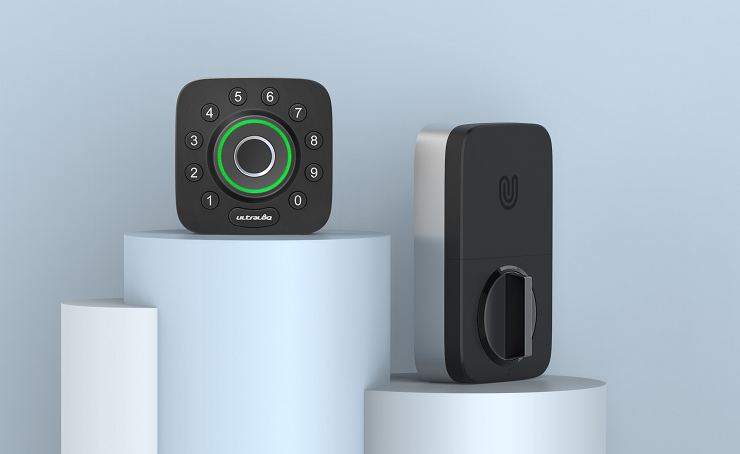
Features:
- 6-in-1 keyless entry
- Fingerprint recognition
- Bluetooth and Wi-Fi connectivity
- Anti-peep keypad
- Auto-lock and unlock feature
Pros:
- Multiple unlocking methods
- Robust security features
- Affordable price point
Cons:
- Requires a Wi-Fi bridge for remote access
- Setup can be tricky
A Final Note
As mentioned earlier, a smart lock doesn’t necessarily make your home safer. If you’re skeptical about smart home technology or uneasy about locks connected via Bluetooth, Wi-Fi, or other protocols, a smart lock may not be for you, and that’s perfectly fine. And if you plan to unlock your door with voice commands, always use a PIN for added security.
Smart locks primarily add a small convenience to your daily routine. They make it easier to enter your home when your arms are full and your keys are out of reach. They can also save you a trip to the hardware store for a new key or rushing home on your lunch break to let in a service professional.
Ultimately, there is no definitive answer to which model you should buy. Consider key factors such as whether you want to keep using traditional keys, which connection method aligns with your smart home setup, and which, if any, third-party devices you want your lock to work with. These considerations will help you narrow down your options and quickly find the right smart lock for you.
